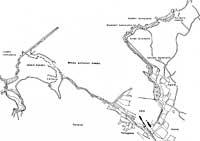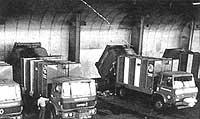Recycling computers
1994/02/01 Otaolaurretxi, Jon Iturria: Elhuyar aldizkaria
Recycling old computers, such as precious metals (gold, silver, palladium, etc.) possible. At least IBM, collecting old computers, treats 6,000 tons a year, from which recovers about 220 kilos of valuable metals. Due to its electromagnetic characteristics, gold is used in electrical connectors.
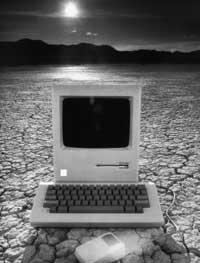
It is also used in copper alloyed printed circuits, but the amount of gold is small, only a few milligrams per microcomputer. In addition, the computer has another 60% ferrous or iron-free materials, 9% glass per cathodic tube and 17% plastics. It should be noted that the percentage of plastics has increased considerably in the last three years.
Is recycling profitable?
Unfortunately, raw material prices have declined in recent years, so recycling materials from old computers is economically less cost-effective, as treatment costs are not covered. Hewlett-Packard, IBM, Siemens, etc. indicate that economic profitability is difficult. The recycling of computers has a cost of between 10,000 and 40,000 pesetas (500-2,000 pounds) per ton, while adding the cost of collecting and storing old computers (100 pesetas on average). or 5 kilos of pound).
Recycling standards
But computers must meet standards (emanated from the governments of Europe, America or Asia) and protect the environment in recent years. The harder the competition between computers, the more they have to take care of the ecological aspect.
Legal limits have also begun. According to a European directive, since January last year computers and vendors are obliged to collect and recycle packaging. This Directive has begun to apply in Germany and France and will be applied in the other European States since 1995. In addition, other rules must be drawn.
First separation
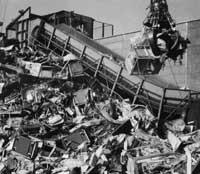
However, some manufacturers are not waiting for governments to develop their own standards and already have recycling machines. Hewlett-Packard, for example, has a recycling plant in Grenoble. It treats a monthly average of 120 tons of computer equipment. First they remove some elements (parts of processors, memories, hard drives, etc.) and after some measurements take advantage of them in maintenance services. The rest of the computer is divided into three sections of industrial treatment. The components of these three groups are plastics (for use as fuel), metals and unrecoverable printed circuits.
Separation between plastics and metals is an important problem in this distribution. Today the machines thrown in the garbage are, say, “old”, manufactured between 5 and 15 years ago, that is, when they did not handle the recycling. It is difficult to separate metals when they contain galvanized or molded plastics directly into metal parts. Therefore, these parts are crushed and milled in mill. Thus by aspiration the plastic particles and by magnetism the ferrous metals are separated. Non-ferrous metals are separated by electrolysis. Other techniques (those using eddy currents) can also complete the distinction.
However, there are elements that cannot be differentiated. Gold and copper, for example, are amalgamated in electronic circuits and are still mixed after treatment. The same goes for plastics. The different polymers are not separated for further independent use. Plastic decreases if used as an alternative fuel. Fine plastic is sent to cemeteries, where they consume many calories. They are burned at 1,800 °C in ovens and there are no ashes left. The combustion fumes are filtered by lime beds to get neutralized to the atmosphere to the maximum.
Glass Parts
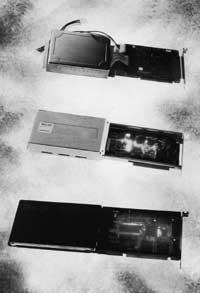
Computer screen is also an important part and recovery has its problems. Layers of rare earth (europium, yttrium, etc.) are found inside the cathodic tubes. and phosphorus, which throw these elements into the atmosphere cause environmental damage. The screen itself consists of different layers of glass, each with its physical and chemical characteristics. Some glasses, such as lead, are difficult to separate. Hewlet-Packard prefers to wait for the right system to be installed. Meanwhile, Grenoble screens are accumulating.
IBM subcontracts cathodic tube recycling. In addition to rare earths and phosphorus, they also separate lead from glass.
100% recycling
Currently, between 93 and 98% of the total weight of computers can be recycled, although both quantitative and qualitative improvements can still be made. The goal is to improve treatment lines and reach 100%. Plastics are now recovered by their calorific power, but it can be interesting to recover the same matter. Plastic would be used to melt or soften and mold. But the classification of polymers is still expensive and industrial procedures are not developed.
As a result, computers have decided to make modifications to the machine's own project. When computers are prepared by modules and discarded after use, they would easily be released in a few minutes (this would also be a great advantage to repair the machine). In this way, plastics, ferrous and non-ferrous metals would be immediately differentiated.
It also aims to reduce the number of types of materials used by computers. Siemens has designed a computer without composite plastics. It is polycarbonate and is easily recyclable. The moving parts are made of ABS or acrylonitrile-butadiene-styrene. In the same line, some computers put the symbol on the pieces to quickly identify the type of plastic at a glance.
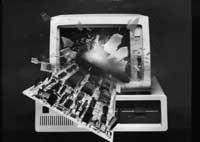
Another environmental aspect is how to prepare electronic circuits. Until now, most manufacturers cleaned electronic cards with CFC or chlorofluorocarbons, and it is known that these products damage the ozone layer. Instead pressure water is used, which is treated by separating materials for reuse. Siemens-Nixdorf treats 20,000 liters of weekly cleaning water recovering 25 tons of copper in a year.
How many computers go to the trash?
Only 1% of the electrical or electronic materials that are released to the European average currently correspond to computers and is a very small amount compared to the number of cars that are removed. But the speed of microinformatics, both professional and domestic, will change a lot. Considering that the computer has a duration of eight or ten years, it is estimated that in France last year 12,000 tons of computers were removed and at the same time 80,000 tons of new computers were sold on the market.
Therefore, the weight of junk computer thrown away within eight years will be seven times greater. But these calculations are not correctly performed. This is due to the improvements made in computers, which make these machines age faster than before and which have to be pulled with four or five years of operation.
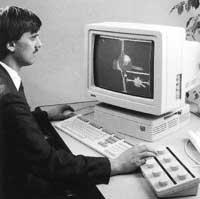
However, both the manufacturer and the municipal authority worry more than the weight of scrap. The computer wastes treated so far were mainly the largest computers, that is, those that weighed hundreds of kilos. Now, on the one hand, the weight of these machines has decreased and on the other, microcomputers have multiplied completely. The weight of the latter ranges from 3 to 12 kilograms, and its location in both private homes and industries makes collecting these microcomputers less easy.
The weight of all microcomputers sold today is greater than that of the largest and the proportion is constant. However, as it is easy to understand, a company’s “mainframe” or large 800kg computer is easier to collect for garbage than eighty small 10kg machines from eighty homes. Therefore, municipal officials have already begun to think about how to collect old microcomputers in many places. One way to facilitate collection can be to pick up the old one when new computer stores are sold.

Gai honi buruzko eduki gehiago
Elhuyarrek garatutako teknologia




